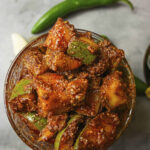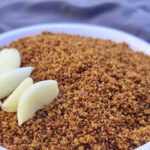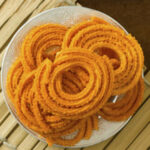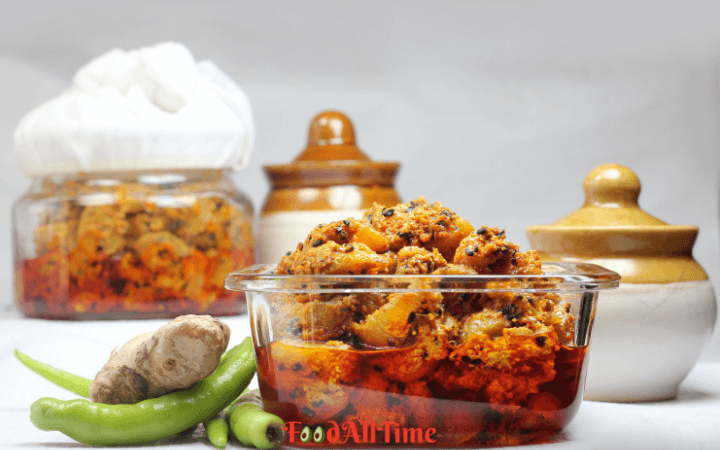Indian pickles, or “achar,” or “pacchadi” are a cherished part of the culinary landscape, known for their rich flavors and diverse ingredients. Whether you enjoy them alongside rice, roti, or as a standalone snack, the debate between homemade vs. store-bought Indian pickles is one that many food enthusiasts engage in. In this blog, we’ll explore the differences between homemade and store-bought Indian pickles, focusing on taste, quality, and why homemade pickles are often the superior choice.
Taste Differences
One of the most significant differences between homemade and store-bought Indian pickles is the taste. Homemade pickles offer a fresh and vibrant flavor that is hard to replicate with mass-produced varieties. When you make pickles at home, you can experiment with a wide range of traditional Indian spices, such as mustard seeds, fenugreek, turmeric, and red chili powder, tailoring the flavor profile to suit your preferences.
In contrast, store-bought pickles can sometimes taste overly salty or artificial. Many commercial varieties rely on preservatives and additives to extend shelf life, which can dull the authentic flavors of the ingredients. If you appreciate a pickle that bursts with the unique spices of India, homemade pickles are likely to win your heart.
Quality of Pickles
Quality is another crucial aspect in the homemade vs. store-bought pickles debate. When you prepare pickles at home, you have full control over the ingredients used. You can select fresh, seasonal produce, high-quality spices, and healthy oils, ensuring that your pickles are free from artificial additives and preservatives.
In contrast, many store-bought Indian pickles contain ingredients like high fructose corn syrup, artificial colors, and other chemicals that can compromise their quality. Many commercial brands prioritize cost over authenticity, resulting in products that lack the depth of flavor and authenticity found in homemade versions. By making pickles at home, you not only ensure high-quality ingredients but also create a product tailored to your dietary needs and preferences.
Why Homemade Pickles Are Better
So, why are homemade pickles often regarded as superior? Beyond freshness and quality, there’s something deeply satisfying about crafting your own food. The process of making Indian pickles can be a delightful experience, allowing you to engage with family traditions and get creative with flavors. You might try variations like spicy mango, tangy lemon, or mixed vegetable pickles, all personalized to your taste.
Additionally, homemade pickles often come with health benefits. Many Indian pickles are naturally fermented, which can enhance their probiotic content, supporting gut health. While some store-bought options may be fermented, many are not, especially those made with vinegar.
Making Indian Pickles at Home: A Simple Guide
If you’re inspired to create your own Indian pickles, here’s a straightforward guide to get started:
1. Choose Your Main Ingredient: Popular choices include raw mango, lemon, or mixed vegetables like carrots, green chilies, or even turnips.
2. Prepare Your Spices: A typical Indian spice mix may include mustard seeds, fenugreek seeds, turmeric, red chili powder, and salt. You can adjust the quantities based on your spice tolerance.
3. Create the Oil Base: Heat mustard oil or sesame oil until it’s smoky, then let it cool slightly. This will be the base for your pickles.
4. Pack Your Jar: Layer your chosen ingredient with the spice mixture in a sterilized jar, ensuring everything is well-coated with the oil and spices.
5. Seal and Store: Seal the jar tightly and place it in a warm, sunny spot for a few days to allow the flavors to meld. After that, you can store it in the refrigerator for longer shelf life.
6. Enjoy: Homemade Indian pickles can last for weeks, adding zest to your meals. Pair them with rice, roti, or simply enjoy them as a flavorful side.
Conclusion
In the discussion of homemade vs. store-bought Indian pickles, homemade versions clearly stand out in terms of taste, quality, and personal satisfaction. By preparing pickles at home, you not only ensure a fresher, more authentic product but also connect with the rich culinary traditions of India. So why not take the plunge and make your own? Your taste buds—and your meals—will thank you!
 Pickles
Pickles Karam Podi
Karam Podi Sweets
Sweets Snacks
Snacks









